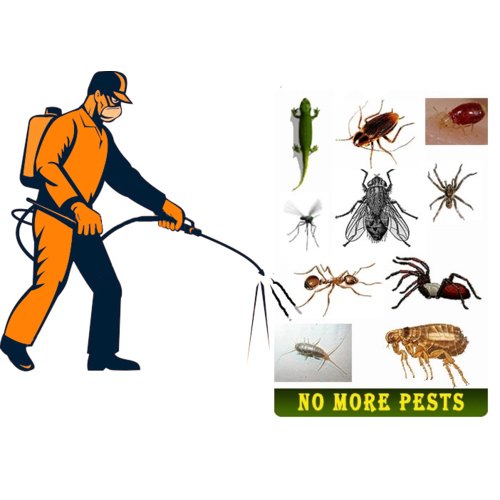Complete Services from Pest Control Lockhart for Any Infestation
Checking Out Infestation and Therapy Approaches in the Globe of Insect Control
The landscape of pest control includes a myriad of difficulties, specifically as infestations of common home parasites proceed to evolve. By integrating precautionary actions with innovative management techniques, such as Integrated Insect Administration (IPM), home owners can much better safeguard their environments.

Usual House Vermin
When it comes to managing our home, comprehending usual house parasites is crucial. These pests not only disrupt our comfort but can also pose health risks and damages residential or commercial property. The most prevalent household pests include ants, roaches, rats, termites, and bed insects.
Ants, usually seen foraging in cooking areas, can pollute food and establish big colonies. Roaches, recognized for their strength, can activate allergies and spread pathogens. Rats, consisting of computer mice and rats, can trigger structural damages and lug illness like hantavirus and salmonella. Termites, typically referred to as "quiet destroyers," can endanger the stability of wooden frameworks, causing expensive repairs. Bed pests, although not illness providers, can cause substantial discomfort through their attacks and cause psychological distress.
Acknowledging the signs of these parasites, such as droppings, nests, or bite marks, is important for very early treatment (Pest Control Lockhart). Proper cleanliness practices, securing entry factors, and maintaining a clutter-free atmosphere are effective preventative actions. By identifying these usual home parasites and comprehending their actions, property owners can take aggressive steps to minimize infestations, making sure a much healthier living atmosphere
Recognizing Insect Infestations
Pest invasions can intensify swiftly, transforming a small aggravation right into a significant problem if not dealt with quickly. Typical aspects adding to invasions consist of bad hygiene, architectural susceptabilities, and seasonal modifications that drive bugs inside.
Recognizing the kind of bug is crucial, as various varieties show diverse habits and reproductive prices. As an example, rodents may establish nests in hidden locations while pests like roaches prosper in moist atmospheres. Early detection frequently hinges on identifying indicators such as droppings, chomp marks, or unusual sounds, which can indicate a trouble prior to it ends up being severe.
Cozy, humid climates can facilitate the rapid growth of parasite populaces, while modifications in landscape design or construction can unintentionally produce helpful atmospheres. An enlightened technique to understanding these characteristics lays the groundwork for effective pest monitoring approaches in the future.
Therapy Techniques and Methods
Reliable therapy techniques and techniques are essential for reducing bug infestations and recovering a risk-free atmosphere. A complex technique is often best, integrating chemical, organic, and mechanical strategies tailored to the particular bug and the extent of the problem.
Chemical treatments include using insecticides and herbicides, which can efficiently get rid of bugs. Nonetheless, correct application and adherence to safety and security standards are crucial to minimize risks to humans and non-target organisms. Integrated Parasite Monitoring (IPM) urges the wise use chemicals as a last option, depending instead on monitoring and threshold degrees to establish investigate this site treatment requirements.
Organic control methods entail presenting natural killers or parasites to lower bug populations. This approach is significantly popular, specifically in agricultural setups, as it advertises environmental sustainability.
Mechanical approaches, such as traps and obstacles, offer immediate remedy for insects without presenting chemicals. Options consist of sticky traps for pests or physical barriers for rodents.
Ultimately, the selection of treatment approach ought to take into consideration the particular parasite, the environment, and possible impacts on human health and wellness and ecosystems. A well balanced combination of these methods can properly handle problems while promoting long-lasting parasite control services.
Preventative Measures for House
Proactively resolving insect problems prior to they escalate is important for keeping a healthy and balanced home environment (Pest Control Lockhart). Carrying out efficient safety nets can substantially minimize the chance of invasions, inevitably protecting both your residential or commercial property and wellness

Appropriate landscape design likewise plays a critical duty in avoidance. Maintaining bushes and trees trimmed away from your house decreases the possibilities of insects finding their way indoors. Furthermore, make certain that water drainage systems are operating effectively to avoid standing water, which can a fantastic read pull in mosquitoes and other pests.
Last but not least, regular evaluations are advisable. Regularly looking for indications of insect task permits for early treatment. By embracing these precautionary measures, home owners can produce an environment that is much less welcoming to pests, therefore improving their overall top quality of life and decreasing the need for substantial insect control treatments.
Industrial Parasite Control Methods
A comprehensive strategy to commercial parasite control is vital for organizations aiming to check this keep a risk-free and sanitary environment. Efficient strategies include a mix of routine examinations, employee training, and the application of Integrated Pest Administration (IPM) techniques.
Regular assessments enable early discovery of parasite activity, enabling prompt intervention. Companies must create a routine schedule for these analyses, concentrating on high-risk areas such as cooking areas, storeroom, and waste disposal websites. Staff member training is equally important; personnel needs to be educated on the signs of bug problems and the importance of reporting them instantly.
Carrying out IPM techniques aids mitigate pest problems sustainably. This includes habitat alteration, such as securing access factors and lowering mess, as well as employing all-natural deterrents prior to turning to chemical therapies.

Furthermore, collaborating with an accredited pest control service provider makes sure access to professional understanding and sophisticated therapy options. This collaboration can bring about tailored parasite control intends customized to the certain requirements of business, reducing risks and enhancing total efficiency. Inevitably, a positive and educated method fosters a pest-free setting, securing both public health and wellness and company credibility.
Conclusion
In final thought, reliable bug control necessitates a detailed understanding of common home parasites and their habits, paired with targeted treatment techniques. Implementing precautionary measures together with therapy strategies such as Integrated Bug Monitoring and biological control improves the capacity to reduce invasions.